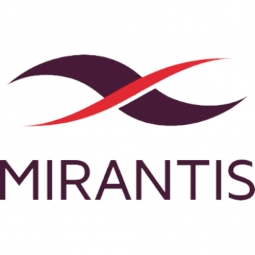Download PDF
Digital Broadcaster Embraces OpenStack Innovation to Build Rapidly Scalable Infrastructure and Improve Services Time-to- Market
Technology Category
- Infrastructure as a Service (IaaS) - Cloud Computing
Applicable Industries
- Telecommunications
Applicable Functions
- Discrete Manufacturing
Use Cases
- Infrastructure Inspection
- Cybersecurity
Services
- Cloud Planning, Design & Implementation Services
- System Integration
The Challenge
The company’s engineering teams build infrastructure and applications that allow the business to deliver market leading digital content to TVs, PCs, and mobile devices. This requires systems that rapidly scale, speed time-to-market, and protect valued intellectual property; all without exceeding target costs. Agile and immediate expansion of infrastructure is especially important for comprehensive sports offerings. “Demand spikes during important events can place a huge strain on our systems,” says the company’s Director of Cloud Solutions. “To respond to large-scale online requests, we often need immediate and sizable increases in application capacity.” Equally important to business success is enabling rapid development and deployment of new customer services. Continuous integration and deployment, now replacing waterfall programming methods, require elastic system architectures that allow for quick provisioning and deprovisioning of infrastructure based on developer needs. In addition to scalability and speed of development, new systems require strong protection of intellectual property to prevent cyber attacks. This means integration with existing robust security solutions. New infrastructure must also integrate with existing network and storage frameworks, and accommodate software development processes with minimal impact on efficiency.
About The Customer
With over 30 million subscribers in the Americas accessing 200 channels of video entertainment, this company is now a recognized leader in digital television. Fueling growth is the innovative streaming of premium content, exclusive concerts, and original series to PCs and mobile devices. And a recent merger has added wireless and broadband customers to an already competitive entertainment portfolio. To maintain leadership and combat new market entrants, engineering teams use rapid innovation to deliver a superior customer experience. The company deploys leading-edge technologies to meet challenging advertiser and subscriber needs including instant access to live and on-demand content – anywhere, anytime – even in periods of peak demand such as sporting events. In this demanding environment, the company requires massively scalable infrastructure that enables rapid and flexible application development. Important to meet this need is extensive use of open source solutions and innovation including those within the OpenStack community.
The Solution
The company’s engineers attended OpenStack conferences and user groups, interacted with community members, and began to formulate strong ideas of how OpenStack technologies could drive a stateof-the-art Infrastructure as a Service (IaaS) deployment. At community events, the infrastructure team was introduced to Mirantis engineers with extensive knowledge of OpenStack architectures. After engaging conversations on architectural options, the team could clearly see how the rapid release of new technologies such as containers and microservices could spur innovation. Of particular interest were developing integrations to existing legacy systems such as authentication, LDAP, and DNS, using OpenStack as a unified control plane with multiple hypervisors, and expediting the path to production. In the fall of 2015, the company was ready to move forward and confidently engaged Mirantis for OpenStack distribution, training, and deployment support of their OpenStack IaaS platform. With a successful proof-of-concept behind them, the team then deployed a pre-production cloud in their U.S. datacenter with the goal to meet all requirements for their intended production infrastructure and scale up to thousands of virtual machines.
Operational Impact
Quantitative Benefit
Related Case Studies.

Case Study
Vodafone Hosted On AWS
Vodafone found that traffic for the applications peak during the four-month period when the international cricket season is at its height in Australia. During the 2011/2012 cricket season, 700,000 consumers downloaded the Cricket Live Australia application. Vodafone needed to be able to meet customer demand, but didn’t want to invest in additional resources that would be underutilized during cricket’s off-season.

Case Study
SKT, Construction of Smart Office Environment
SK T-Tower is the headquarters of SK Telecom. Inside the building, different types of mobile devices, such as laptops, smartphones and tablets, are in use, and with the increase in WLAN traffic and the use of quality multimedia data, the volume of wireless data sees an explosive growth. Users want limitless Internet access in various places in addition to designated areas.









